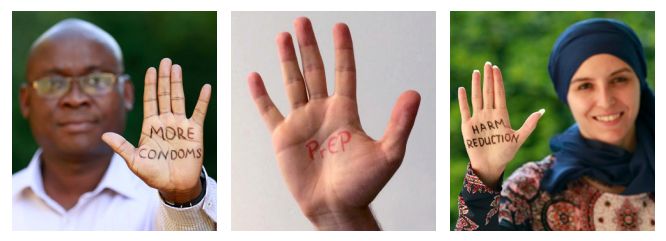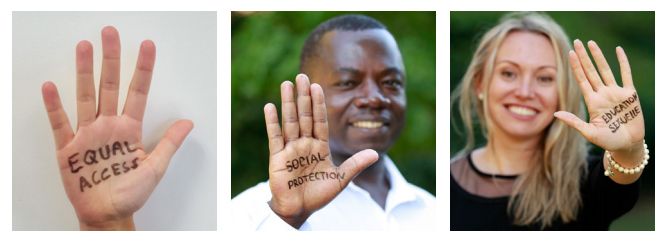How to participate
In the lead-up to World AIDS Day 2016, the hands up for #HIVprevention campaign will explore different aspects of HIV prevention and how they relate to specific groups of people, such as adolescent girls and young women, key populations and people living with HIV.
Starting in September, the campaign will also offer people a space to express their views on what they think needs to be done to strengthen HIV prevention efforts. UNAIDS is asking people around the world to submit:
- A photograph of a word or short phrase written on the palm of their hand summarizing what we need to strengthen HIV prevention efforts, for example more condoms, empowerment, inclusion, pre-exposure prophylaxis (PrEP), rights for women and girls; and/or
- A short video message (maximum 30 seconds) explaining what in their view needs to be done to reduce new HIV infections in their community.
The photo
Take a photo of your raised hand with a word or phrase written on your palm—the photo can show just your palm or your palm and face. Make sure your hand is not too far from your face!
The video message
You can record your short video message on a smartphone.
Share it
Go to the UNAIDS Facebook page and upload your photo/video on the event page specially created for the 2016 World AIDS Day #HIVprevention campaign. Then, share it on your own Facebook wall to help us spread the word.
Suggested topics
The campaign will cover aspects of HIV prevention, such as condoms and lubricants, harm reduction, PrEP, voluntary medical male circumcision, prevention of mother-to-child transmission of HIV, testing and viral suppression. It will also explore how to address the barriers that prevent adolescent girls and young women, key populations and people living with HIV from accessing and using these services.
As an inspiration for your photo/video message, you might think about answering questions such as:
- What needs to be done to reduce the number of new HIV infections?
- How can we scale up resources for HIV prevention?
- Who needs to be involved in designing and delivering prevention programmes and services?
- How can we make sure that HIV prevention programmes and services reach the people most in need?
- What policies or approaches need to change to strengthen HIV prevention efforts?
As further inspiration, you might also like to refer to the Fast-Track commitments to end AIDS by 2030.


